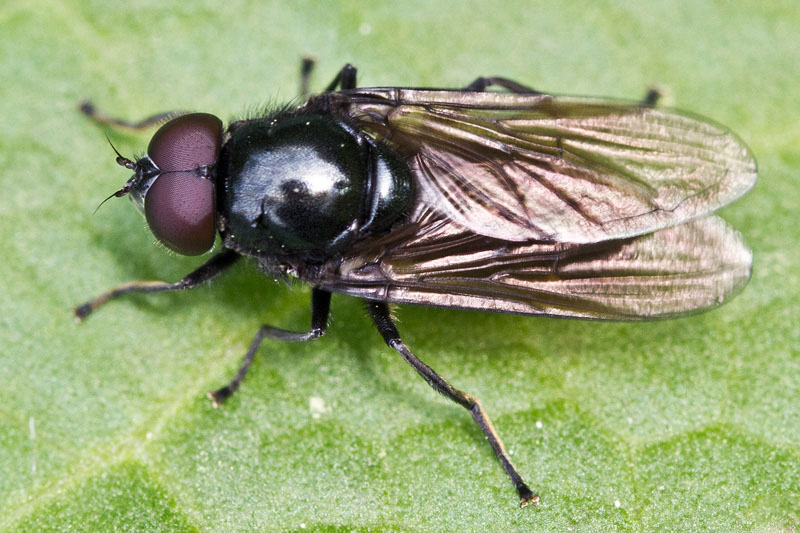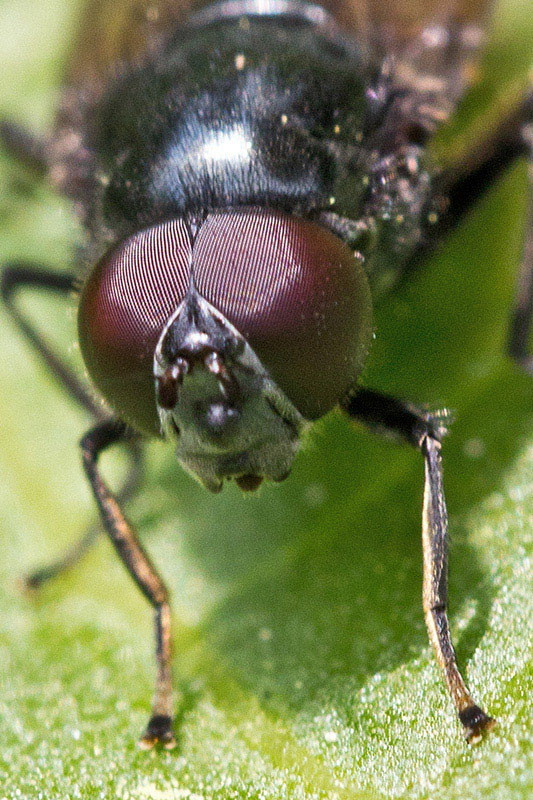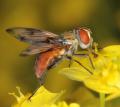Diptera.info :: Family forums :: Syrphidae
Who is here? 1 guest(s)
|
Syrphidae Cheilosia spec.? --> Ch. albitaris or ranunculi
|
|
| Konrad Seipelt |
Posted on 17-10-2013 09:42
|
|
Member Location: Posts: 179 Joined: 24.01.12 |
Hello, ID possible, perhaps Cheilosia sp.? Location: Germany, east of Nordrhein-Westfalen, wet meadow with deciduous trees, size about 8 mm with wings, photos on 16.05.2013. Regards, Konrad Konrad Seipelt attached the following image:  [140.9Kb] Edited by Konrad Seipelt on 23-10-2013 16:46 |
|
|
|
| Konrad Seipelt |
Posted on 21-10-2013 12:30
|
|
Member Location: Posts: 179 Joined: 24.01.12 |
#2 Konrad Seipelt attached the following image:  [186.23Kb] |
|
|
|
| Gerard Pennards |
Posted on 22-10-2013 22:32
|
|
Member Location: Amersfoort Posts: 1914 Joined: 07.06.04 |
Male Cheilosia albitarsis/ ranunculi. Probably albitarsis....
Greetings, Gerard Pennards |
|
|
|
| Konrad Seipelt |
Posted on 23-10-2013 16:49
|
|
Member Location: Posts: 179 Joined: 24.01.12 |
Hello Gerard, thank you once more for the determination. Best greetings, Konrad Edited by Konrad Seipelt on 05-11-2013 15:05 |
|
|
|
| Ectemnius |
Posted on 04-11-2013 22:23
|
|
Member Location: The Netherlands Posts: 865 Joined: 22.11.11 |
Hello Konrad Seipelt, I would say this is definitely a Cheilosia albitarsis. C. ranunculi has a trapezoid-shaped first tarsae segment, with its margings oblique. The second photo shows tarsae segment one that has the sides parallel sided instead of oblique. Also, in the field C. ranunculi has a yellower wing-base than C. albitarsis. This feature however is not easily noticed. Once you have some field experience with both species you'll start to notice this. The habitat is also an indication, C. albitarsis can be found anywhere, but not C. ranunculi. The species is assumed to develop in Ranuculus bulbosus, a species of drier and warmer habitats. Also C. ranunculi emerges earlier then C. albitarsis. At least that is the case where I have collected the species here in Noord-Beveland, Zeeland, The Netherlands. C. ranunculi can be found from about 25th of April till the 12th of May. From the 10th of may, at the same locality, C. albitarsis appears, but in low numbers. I hope I didn't over feed you with info, I just hope it will help you find the species in your area! Greetings, Ectemnius |
|
|
|
| Konrad Seipelt |
Posted on 05-11-2013 15:12
|
|
Member Location: Posts: 179 Joined: 24.01.12 |
Hello Ectemnius, thank you very much for the interesting and detailed informations. I'll try to use these infos next year. Greetings, Konrad |
|
|
|
| Jump to Forum: |












